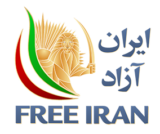In a major turn of events, state-run news agencies have reported that a helicopter carrying the Iranian regime’s president Ebrahim Raisi crashed in East Azerbaijan Province. According to initial reports, the convoy consisted of three helicopters. While two helicopters carrying other ministers and officials safely reached their destination, the one carrying Raisi did not.
The Fars News Agency confirmed that among the passengers were Raisi, Tabriz’s Friday prayer leader Mohammad-Ali Alehashem, Foreign Minister Hossein Amir-Abdollahian, East Azerbaijan Governor Malek Rahmati, and several others. Rescue teams are currently being dispatched to the crash site.
As of 5 PM local time, the helicopter carrying Raisi had not been located, and attempts to contact its passengers have been unsuccessful, with all phone lines going unanswered.
State media outlets explicitly reported the crash of Raisi’s helicopter. Ahmad Vahidi, the regime’s Interior Minister, stated, “Rescue teams have not yet reached the accident site. We have no communication or information.”
In an interview with Rokna, Vahidi explained, “Today, we attended the inauguration of the Qiz Qalasi Dam with the President of Azerbaijan. On the return journey, one of the helicopters, due to adverse weather conditions and the situation in the area, was forced to make a hard landing.”
Search and rescue dogs and drones have been deployed to the crash area, and the Islamic Revolutionary Guard Corps (IRGC) has urged Iranians to pray for Raisi’s survival. While the regime is broadcasting prayers in mosques and seminaries, urging people to pray for Raisi and his companions, Iranians at home and abroad have taken to social media, expressing hopes for their demise.
Who is Ebrahim Raisi

Ebrahim Rais-al-Sadati, known as Ebrahim Raisi, was born in 1959 in the Noghan neighborhood in the city of Mashhad, Khorasan Razavi province. After finishing elementary school, he studied in Mashhad’s seminary. In fact, his non-seminary education is only up to sixth grade. He was sent from Mashhad’s seminary to Qom’s seminary at the age of 15.
Raisi after 1979 revolution in Iran
Raisi was eighteen at the time of the 1979 anti-monarchic revolution. In the first days of the establishment of the regime, at the invitation of Hadi Marvi, Ruhollah Khomeini’s representative in Masjed-e-Soleiman, Raisi went to Masjed-e-Soleiman, and his connection with the clerical court began.
A year later, after returning from the crackdown on Masjed Soleiman, Raisi was sent to the Karaj Prosecutor’s Office as a judge while he was just 19 years old. His job there was basically to interrogate detainees. At the age of 20, the then Revolutionary Prosecutor, the criminal cleric Ali Qoddusi, appointed Ebrahim Raisi as the Karaj Prosecutor. After a few months and after countless crimes in Karaj, Ebrahim Raisi was appointed as the Prosecutor of Hamedan while simultaneously retaining his position in Karaj. Thousands of political prisoners were tortured and executed in both prisons when Raisi was the prosecutor. “Hanging by crane was his favored method of execution,” one of his victims who survived said. “He said the sight of man hanging from a crane terrifies others,” he is reported to have said.
In 1984, when Ali Razini became the head of the Central Revolutionary Prosecutor’s Office, he appointed Ebrahim Raisi as the deputy head of the Central Revolutionary Prosecutor’s Office.
Most importantly, he was one of the key members of the “Death Commissions” during the 1988 massacre. As Deputy Prosecutor of Tehran then, he personally sent thousands of members of the People’s Mojahedin Organization of Iran (PMOI/MEK) to death in 1988 alone.
With this track record, he was appointed by Ali Khamenei as the head of Iran’s Judiciary, a post he held until he ran to become president.
1988 Massacre
In 1988, the Iranian regime’s then-Supreme Leader, Ruhollah Khomeini, issued a religious decree or fatwa, ordering the mass execution of all political prisoners. Shortly after, the “Death Commissions” were formed in more than 70 cities. These “Death Commissions” implemented Khomeini’s fatwa. In a matter of a few months, more than 30,000 political prisoners, mostly members and supporters of the main opposing group, the People’s Mojahedin Organization of Iran (PMOI/MEK), were executed.
When asked about the 1998 massacre, Raisi always defended his actions. He was quoted by the state-run ISNA news agency on 1 May 2018 as saying that the circumstances of those executed during the massacre was analogous to the situation of “several thousand drug traffickers today whose sentences have been finalized but a decision has not yet been made to have them carried out.” And when asked about the 1988 during his first press conference after he became president, he said that he had been safeguarding the rule of law and that he should be rewarded for his action in 1988.
On June 18, 2021, the Iranian regime’s Supreme Leader Ali Khamenei pulled Ebrahim Raisi out of the ballot box as the regime’s next president.
Montazeri audio file: Evidence that Raisi was part of the 1988 Death Commissions.
In a meeting on August 15, 1988 between Iran’s then-Deputy Supreme Leader Ayatollah Hossein-Ali Montazeri (an opponent of the 1988 massacre) and members of the Tehran Death Commission – Hossein-Ali Nayyeri, Ebrahim Raisi, Morteza Eshraqi, and Mostafa Pour-Mohammadi – at Ayatollah Montazeri’s home in Qom, the Death Commission members are heard appealing to Ayatollah Montazeri to give his blessing for them to carry out the execution of another 200 political prisoners. During that conversation, Montazeri strongly criticized the executions and told Raisi and the three others, “In my opinion, the biggest crime of the Islamic Republic and one that history will condemn us for, has been perpetrated at your hands and it will register your name as criminals, no doubt about it.” Raisi’s voice can be clearly heard on the audio file, released in 2016.
Another piece of evidence of Raisi’s role in the 1988 massacre is a letter, dated 15 August 1988, from Ayatollah Montazeri to members of the Tehran Death Commission. This letter is specifically addressed to Ebrahim Raisi and three other key members of the Death Committee (Nayyeri, Eshraqi, and Pour-Mohammadi.)

